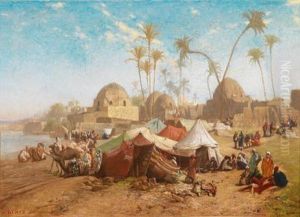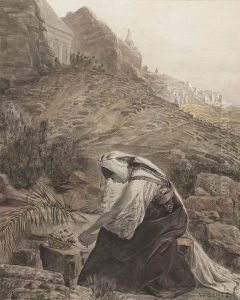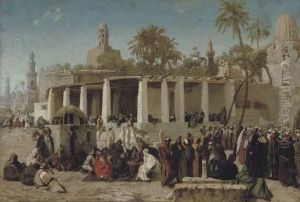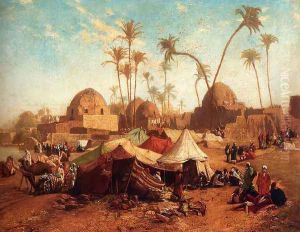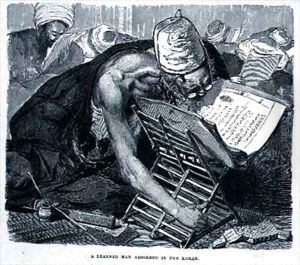Karl Wilhelm Gentz Paintings
Karl Wilhelm Gentz was a German orientalist painter born on February 26, 1822, in Neuruppin, a town in Brandenburg, Prussia. He is well-known for his detailed and atmospheric paintings that often depict scenes from the Near East, reflecting the 19th-century European fascination with Orientalism. Gentz's interest in Orientalist themes was likely sparked by the broader cultural trends of his time, which saw many European artists and writers captivated by the exotic allure of the East.
Gentz received his early education in his hometown before moving to Berlin to study at the Prussian Academy of Arts. He was a student of renowned artists such as Wilhelm von Schadow and Carl Joseph Begas, who were influential in shaping his early artistic development. In Berlin, Gentz was exposed to a vibrant artistic community and the works of other orientalist painters, which further fueled his interest in Eastern subjects.
In the 1850s, Gentz embarked on a journey to the Near East, which had a profound impact on his career and artistic direction. He traveled extensively through Egypt, Palestine, and other parts of the Ottoman Empire, sketching and painting the landscapes, people, and cultures he encountered. These travels provided him with a wealth of material and inspiration for his future works.
Upon his return to Germany, Gentz settled in Berlin and became a member of the Berlin Artists' Association. His paintings from this period were characterized by meticulous attention to detail, vibrant color palettes, and a sense of authenticity that resonated with audiences. Gentz's depictions of markets, caravans, and street scenes were particularly admired for their lively and engaging portrayal of daily life in the East.
Throughout his career, Gentz exhibited his works at various art shows and gained significant recognition for his contribution to orientalist art. His paintings were sought after by collectors and art enthusiasts, and he received numerous awards and honors for his artistic achievements.
Karl Wilhelm Gentz continued to paint until his death on December 11, 1890, in Berlin. His legacy endures through his captivating and historically significant paintings, which remain a testament to the 19th-century European fascination with the Orient and contribute to our understanding of orientalist art during that period.






